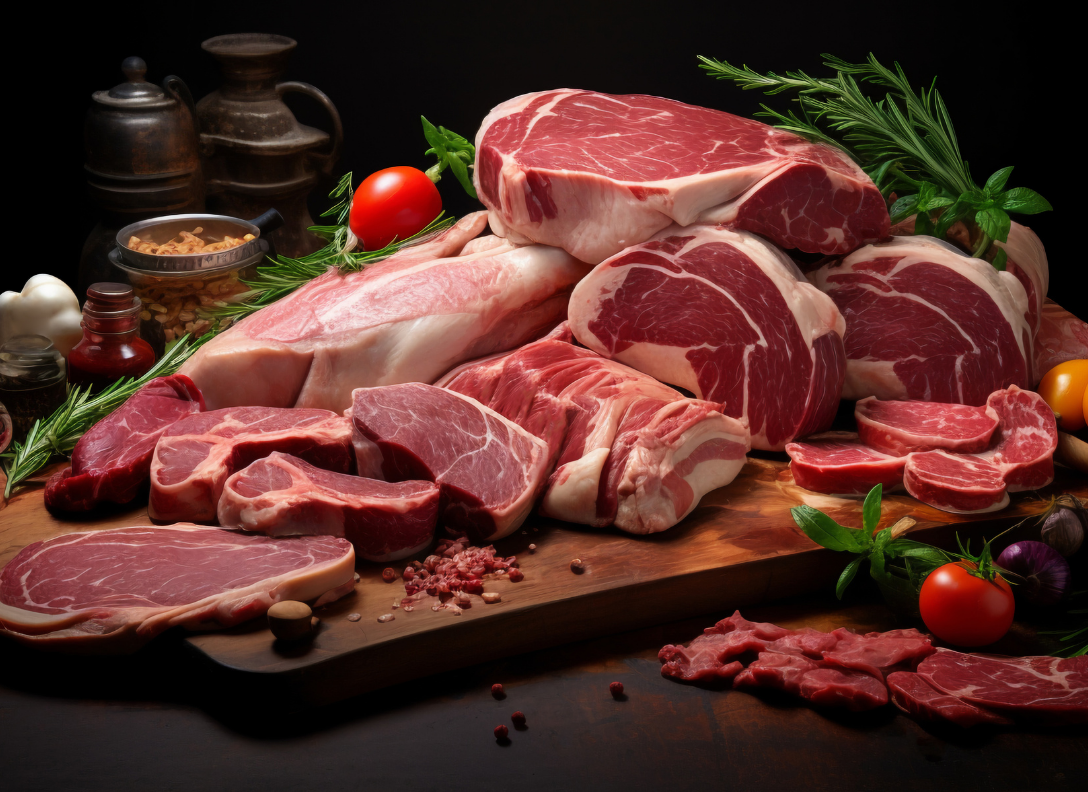In recent years, the food industry has witnessed a quiet revolution meat that doesn’t come from traditional animal farming. From the rise of plant-based burgers that “bleed” like beef to cultured chicken nuggets grown directly from animal cells, alternative proteins are transforming how we think about food. The market is booming: according to industry reports, the global plant-based meat market is already worth $8–10 billion, while cultured meat, though newer, is projected to reach billions within the next decade.
But many people are still asking: What’s the actual difference between plant-based meat and cultured meat? At first glance, both are alternatives to conventional meat, designed to appeal to meat-eaters and vegetarians alike. Yet the science, production methods, nutrition, and even ethical implications are quite different.
Imagine this: you’re at the grocery store and see two burger patties—one labeled “plant-based” made from peas and soy, and the other labeled “cultured meat” grown from real animal cells. Both promise fewer environmental impacts than traditional beef. But which one is closer to the real thing? Which is healthier, safer, or more sustainable?
In this guide, we’ll break it all down in simple, clear terms: how each is made, what sets them apart, their pros and cons, cultural acceptance, and what the future of protein might look like.
What Is Plant-Based Meat?
Definition
Plant-based meat is food made entirely from plant ingredients (such as soy, peas, beans, mushrooms, or wheat) but designed to mimic the taste, texture, and appearance of real meat.
How It’s Made
- Protein Sources: Soy protein, pea protein, or wheat gluten are the backbone.
- Texture & Structure: Food scientists use processes like extrusion (pressurizing and heating proteins) to create a fibrous, meat-like feel.
- Flavor & Color: Ingredients like beet juice, heme (from soy or fermentation), or mushrooms add savory flavors and a meat-like look.
- Fats & Juiciness: Oils (coconut, sunflower, canola) replicate the fatty mouthfeel of meat.
Examples
- Beyond Meat burgers (pea protein).
- Impossible Burger (soy protein + heme).
- Plant-based sausages, chicken nuggets, even seafood.
What Is Cultured Meat?
Definition
Cultured meat—also called lab-grown, cell-based, or cultivated meat—is real animal meat produced by growing animal cells outside of the animal in a controlled environment.
How It’s Made
- Cell Collection: A small sample of animal cells is taken without killing the animal.
- Nutrient Growth Medium: Cells are fed nutrients like amino acids, sugars, and vitamins—similar to what they would get inside a living body.
- Bioreactors: Cells are placed in large tanks where they multiply.
- Tissue Formation: Scaffolds help cells grow into structured pieces like nuggets or fillets.
Examples
- Upside Foods: Cultured chicken approved in the U.S. in 2023.
- GOOD Meat: Cultured chicken sold in Singapore.
- Future products: Beef, pork, seafood fillets.
Key Differences Between Plant-Based and Cultured Meat
1. Source of Protein
- Plant-based: Proteins from soy, peas, wheat, beans, etc.
- Cultured: Real animal cells, genetically identical to conventional meat.
2. Taste & Texture
- Plant-based: Very close mimicry, but some people notice a difference.
- Cultured: Expected to be nearly identical, since it is real meat biologically.
3. Environmental Impact
- Plant-based: Much lower carbon footprint than traditional meat; less land and water use.
- Cultured: Promising, but current production is energy-intensive. Still debated whether it’s greener at scale.
4. Health & Nutrition
- Plant-based: Can be fortified with vitamins but may contain processed oils, sodium, or additives.
- Cultured: Biologically identical to meat, but scientists can tweak fat composition to make it healthier.
5. Ethical Considerations
- Plant-based: No animal involvement, 100% cruelty-free.
- Cultured: Requires initial animal cell sample, but avoids slaughter and large-scale farming.
6. Market Stage
- Plant-based: Widely available in supermarkets and restaurants.
- Cultured: Still limited to pilot programs in a few countries.
Pros and Cons
Plant-Based Meat
Pros:
- Widely available and affordable.
- No animal farming required.
- Lower environmental footprint than beef/pork.
Cons:
- Often processed, high in sodium.
- Not always convincing to meat lovers.
- May cause allergies (soy, wheat).
Cultured Meat
Pros:
- Real meat without slaughter.
- Could satisfy meat eaters fully.
- Potential to reduce animal agriculture emissions.
Cons:
- Very expensive currently.
- Regulatory hurdles and consumer skepticism.
- Environmental benefits not yet fully proven.
The Future of Meat Alternatives
- Plant-Based Expansion: Moving beyond burgers into seafood, deli meats, and dairy alternatives.
- Cultured Meat Scaling: Costs falling, but still years from mass production.
- Hybrid Products: Some companies are combining plant proteins with cultured fat for better flavor.
- Cultural Acceptance: Younger generations are more open to alternatives, while older consumers may resist.
FAQs
1. Is plant-based meat healthier than regular meat?
It depends. Plant-based meats are lower in cholesterol and can be fortified with vitamins like B12 and iron. However, many products are processed and may be high in sodium or refined oils. Compared to a heavily processed sausage or burger, plant-based versions may be healthier, but compared to lean chicken breast, not always. The key is moderation and choosing plant-based options with simple, whole-food ingredients when possible.
2. Will cultured meat replace traditional farming?
Not anytime soon. Cultured meat has incredible potential, but it is still expensive and produced on a very small scale. Regulatory approval is also a hurdle in most countries. Traditional farming will continue for decades, but cultured meat may take over specific markets like chicken nuggets, ground beef, or seafood where texture and scale are easier to replicate. The most likely future is a coexistence of traditional, plant-based, and cultured meat.
3. Is cultured meat safe to eat?
Yes, early regulatory approvals (Singapore in 2020, U.S. in 2023) only happened after extensive safety testing. Cultured meat is grown in sterile environments, free from antibiotics or hormones used in factory farming. That said, long-term studies are still limited, and consumers may need reassurance. The good news is that because it’s real animal meat, the nutritional profile is familiar, and the risk of pathogens like E. coli is much lower than conventional slaughter.
4. Do plant-based meats taste like real meat?
The best plant-based meats are impressively close—especially products like Impossible Burger, which uses soy heme for a “meaty” flavor. However, some consumers still notice differences in texture or aftertaste. Cooking method matters too: grilling plant-based burgers often brings them closer to real meat. For dedicated meat eaters, cultured meat may provide the closest match, but plant-based options are continuously improving and already satisfy millions worldwide.
5. Which option is better for the environment: plant-based or cultured meat?
Plant-based meats clearly use less land, water, and resources than beef or pork. Cultured meat’s environmental impact is more complicated—it avoids livestock farming but requires a lot of energy for bioreactors. Some studies suggest cultured meat could be greener than beef but not as efficient as lentils or soy. Long-term, if renewable energy powers cultured meat facilities, its sustainability will improve significantly. For now, plant-based meat is the greener choice.
6. Will these alternatives ever be cheaper than real meat?
Plant-based products are already approaching price parity in some markets, though still often more expensive than traditional chicken or pork. Cultured meat, on the other hand, costs hundreds of dollars per pound to make—though that’s far lower than its initial lab cost of $300,000 for a burger in 2013. As technology advances and production scales up, prices will drop. Experts predict cultured meat may compete with premium meats within 10–15 years.
The difference between plant-based and cultured meat lies in both ingredients and philosophy. Plant-based meats rely on plants to recreate the sensory experience of meat, while cultured meats grow the real thing without raising or slaughtering animals. Both aim to reduce the environmental and ethical burdens of conventional animal farming, but they take very different scientific paths to get there.
For today’s consumer, plant-based meat is the practical option: it’s widely available, relatively affordable, and suitable for anyone curious to cut down on animal products. Cultured meat, meanwhile, feels like the future—real meat without the ethical baggage—but remains limited to small-scale launches and luxury pricing.
The big picture? We are at the beginning of a protein revolution. Just as renewable energy is transforming how we power our homes, alternative proteins are changing how we fuel our bodies. The next decade will determine whether these innovations become mainstream staples or remain niche products.
For now, the healthiest approach is variety: enjoy plant-based meats as part of a balanced diet, watch for cultured meat developments, and remember that whole plant foods—beans, lentils, vegetables—still remain the gold standard for nutrition and sustainability.




